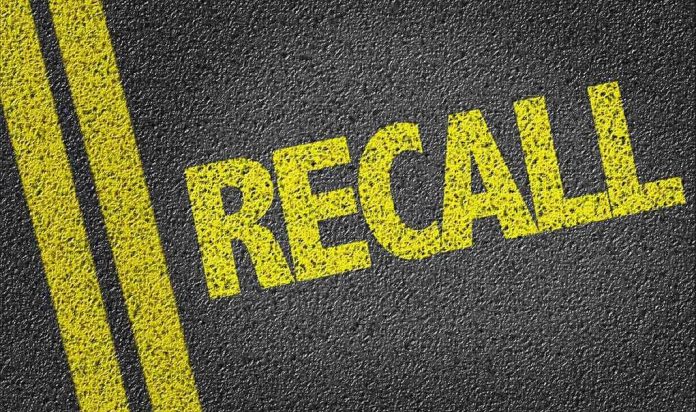
When your seat belt could snap in a crash and your rearview camera goes dark, what would you do—trust the brand, or question everything you thought you knew about automotive safety?
Story Snapshot
- Ford issues a sweeping recall of nearly 625,000 US vehicles over two distinct safety defects.
- Critical failures involve seat belt pretensioners in Mustangs and malfunctioning rearview cameras in F-Series pickups.
- Regulatory scrutiny is at an all-time high, forcing Ford into proactive crisis management and transparency.
- The recall underscores mounting industry challenges as technology and quality control collide in today’s automobiles.
Ford’s Dual-Defect Recall: A Wake-Up Call for the Industry
Ford’s October 2025 recall didn’t just make headlines—it rattled the core assumptions of vehicle safety for hundreds of thousands of Americans. The company identified two separate, potentially deadly defects in some of its most iconic and popular models: seat belt pretensioner cables prone to failure in the Mustang, and rearview cameras that could simply stop working in its F-Series pickup trucks. Each flaw alone would warrant concern. Together, they triggered a groundswell of regulatory, consumer, and industry attention. For Ford, this wasn’t just another recall. It was a high-stakes test of credibility and crisis response.
Engineers and regulators zeroed in on these problems after reports of seat belts failing to restrain occupants during collisions, and camera displays going blank—undermining both crash survivability and accident prevention. The National Highway Traffic Safety Administration (NHTSA) ramped up its oversight, compelling Ford to act swiftly and comprehensively. Notifications to owners began rolling out before the month was out, and dealerships braced for a surge of anxious customers. Ford’s public statements stressed a commitment to safety, but the subtext was clear: the era of sweeping problems under the rug is over, and transparency is now a regulatory and reputational mandate.
Regulators, Owners, and Dealers: The Push and Pull of Crisis Response
NHTSA’s growing influence shaped every step of Ford’s response. The federal agency forced the automaker’s hand, demanding immediate action and full cooperation. Ford’s leadership and safety engineers worked overtime, balancing the technical challenge of repairs with the messaging required to reassure a skeptical public. Owners, meanwhile, found themselves in the crosshairs—caught between concern for their families’ safety and frustration at yet another recall. Dealerships, always the foot soldiers in these campaigns, scrambled to accommodate repairs and handle the spike in customer volume, all while wrestling with the logistical headaches of parts availability and workforce strain.
The power dynamics were unambiguous: NHTSA wielded the regulatory stick, Ford raced to restore trust, and consumers demanded answers. Each group’s priorities converged on a single point: how quickly and effectively the recall could be executed, and whether this would finally mark a turning point in automaker accountability.
Automotive Recalls: A Symptom of Systemic Complexity
Automotive recalls aren’t new, but their frequency and scope have ballooned in the last decade. Ford’s latest recall lands amid a tsunami of similar events industry-wide, as vehicles become rolling computers and safety-critical systems grow ever more complex. Advanced technologies like electronic seat belt pretensioners and digital camera displays promise safer roads—but they also multiply failure points and raise the stakes of every defect. Ford, like its competitors, is learning that integrating new tech at scale is a double-edged sword. Regulators have responded by tightening oversight and raising the cost of non-compliance, both financially and reputationally.
Ford recalls nearly 625K US vehicles over faulty seat belts, camera displays https://t.co/KDFpHm3yIY pic.twitter.com/Q6izarWFFg
— New York Post (@nypost) October 17, 2025
The broader impact is unmistakable: consumers are warier, dealers are busier, and automakers face a relentless drumbeat of scrutiny. Each large-scale recall chips away at public trust, while also driving improvements in quality assurance and transparency. Industry analysts point to Ford’s proactive recall as evidence that the old calculus—delay, deny, deflect—no longer works in an era of instant information and regulatory muscle.
Safety, Technology, and Trust: What Comes Next for Ford and Drivers
The immediate fallout for Ford is measurable in service appointments, repair costs, and a spike in negative headlines. The long-term consequences could be even more profound. Regulatory penalties loom if Ford’s fixes fall short, while shifts in consumer sentiment may prompt buyers to think twice before signing for their next Mustang or F-150. Yet there’s a paradox here: as recalls become more frequent, so too does the expectation of swift, open, and thorough corporate action. Safety advocates and industry experts see Ford’s recall as both a warning and a model—a sign that deep-seated quality control challenges persist, but also that transparency and rapid response are now the price of doing business.
For owners, the recall is an inconvenience with real safety implications, a test of both patience and loyalty. For Ford—and the industry at large—it marks another lesson in the high cost of complexity and the non-negotiable value of trust. The road ahead will be shaped by how well automakers learn from these episodes, and whether regulators, manufacturers, and consumers can finally align around a shared standard for safety in the digital age.
Sources:
Autoblog: Ford recalls nearly 625,000 Mustang, F-Series pickups over cameras, seatbelts
Phillyburbs: Ford recalls Ford Mustangs, trucks F-250 SD, F-350 SD, F-450 SD







